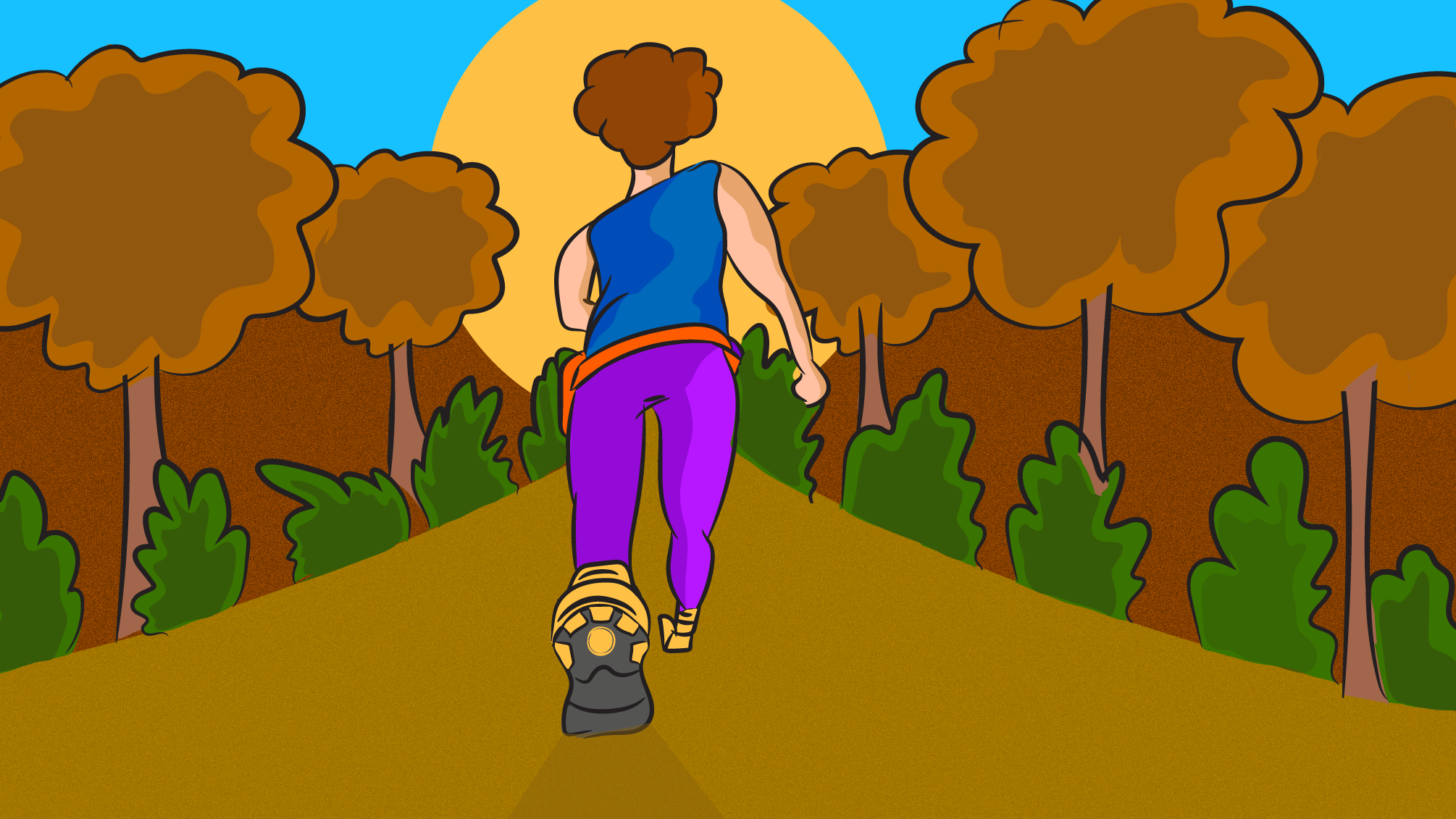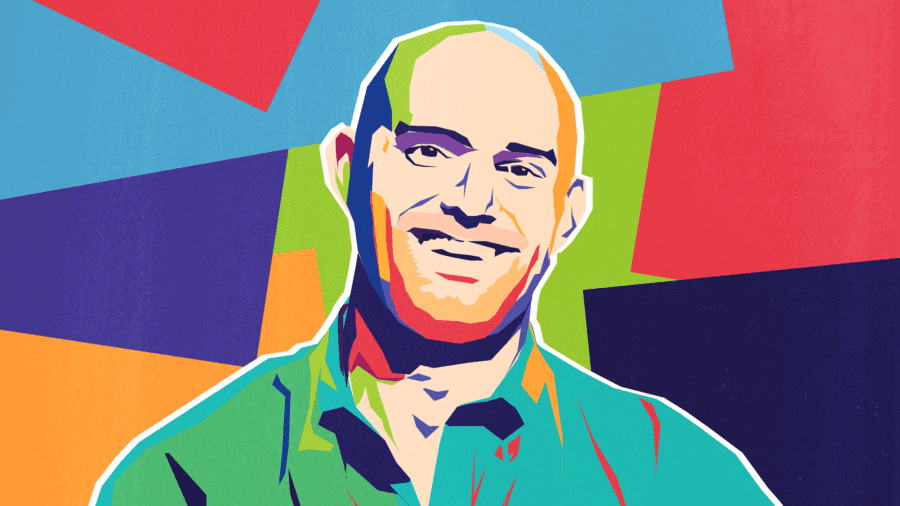
Our Favorite Walking Meditation and Mindfulness Practices to Make the Most of Your Day
Anxiety and loneliness are feelings most people are familiar with.
All too often, we scroll social media, binge watch TV shows, party all weekend, or Doordash ourselves a deep dish pizza to distract ourselves from these unpleasant feelings.
But would you believe there is a way to move through uncomfortable feelings and experience peace and joy without changing anything tangible in our lives?
Science says it’s possible by practicing mindfulness!
In this article, we will be unpacking the mindfulness practice of meditation, steps for a simple and refreshing walking meditation, as well as discovering five mindfulness practices from experts including Jay Shetty, Preethaji, and Dr. Joe Dispenza.
What Is Meditation?
Have you ever experienced a deep sense of calm where all was well with your world — everything wasn’t perfect, but for some inexplicable reason you knew everything was okay?
You can intentionally experience that same feeling through meditation. It’s usually thought of as sitting cross legged, hands palm-up, eyes closed and breathing deeply. But meditation can be done while driving, walking, or even cooking.
So, what is meditation exactly? Meditation is simply a mindfulness practice.
Which leads to yet another question: What is mindfulness?
Webster 1828 defines mindfulness as, “the state of being mindful; the practice of maintaining a nonjudgmental state of heightened or complete awareness of one’s thoughts, emotions, or experiences on a moment-to-moment basis.”
In this state we are able to experience our existence and the world around us without conflict — without wishing it was somehow different. This frees us to be calm and present.
What Is Walking Meditation?
Walking meditation is often a preferred form of meditation, because you can be on your way to a destination, scenery is changing as you go, and you don’t have to feel stuck in one place with your thoughts.
It may sound fancy at first, but walking meditation is simply turning walking into a practice of mindfulness by getting the body and mind in sync. This practice allows you be mindful while going about mundane life. The more you can be in a mindfulness state during the day, the more productive, happy, and relaxed you are!
Walking meditations come down to focusing on your senses. Here’s one routine:
- Begin by breathing deeply and slowly, in through your nose and out through your mouth.
- Then listen to the crunch of your feet and the swish of your clothes as you walk.
- Notice what you hear: the wind whistling, birds chirping, cars rumbling.
- Acknowledge what you see: leaves dancing, light streaming, clouds scurrying.
- Name what you can smell.
- Finally, become aware of your thoughts — what are you thinking? You’re not trying to change your thoughts, you’re simply noticing them.
Walking meditation is most often done outside on a nature trail or around the building you work in — it’s a great way to clear your mind and get some fresh air during a lunch break. Some people like to repeat mantras like, “I breathe in love. I breathe out love,” as they walk. The important part is to draw awareness to where you are mentally, physically, spiritually, and relationally.

The Greatness Mindset
Learn the secrets of some of the greatest minds in the world. Unlock the power of your mind and live your best life today.
Learn MoreWhether moving or sitting, meditation is a powerful and transformative mindfulness practice that allows us to live out our truest self.
Mindful Practices from Jay Shetty
Did you know that a sunflower turns throughout the day so that it is always facing the sun? A sunflower’s existence is focused on following the sun, so what does it do? It follows the sun.
Our actions do the same thing, but instead of following the sun they follow whatever thought we focus on. The challenge with this is many of us are living such a fast paced life that we have no clue what thought — if any — we’re focusing on from one moment to another.
Jay Shetty, New York Times Best Selling Author of Think Like a Monk, saw this a lot when he returned to the workplace after training as a monk for three years. Everyone around him was stressed. That’s when he began to see the value mindfulness would have not just as a monk but in everyday suburban life.
Morning Routine
The first practice Jay recommends to experience a more fulfilling life is an incredible morning routine. “As a monk you’re trained to have an incredible morning routine and then whatever you do in your day will be incredible because you started off correctly.”
An incredible mindful morning routine should include three things:
- Drawing attention to your breath. This is one of the first steps to any mindfulness practice.
- Bringing awareness to your current state. How are you feeling? What is stirring up those feelings? How would you like to feel?
- Setting your intention. What is your focus of the day going to be?
When you start your day well, you’re setting your day up for success. It’s very likely things won’t go perfectly, but by setting an intention for the day you will more easily be able to return to a grounded state when disruption occurs.
Pull The Weeds
Could you make a list of the people who bring you the most joy and who are most draining to you? Being able to do so is a sign of mental awareness.
Mental awareness is the first step in what Jay refers to as “pulling the weeds” to refine your intention. Weeds are anything that gets in the way of your life’s intention. For many people, a life intention will simply be to be of service. In that instance, weeds could be anything that keeps service from happening, whether that’s desiring more followers on social media, or feeling like you’re not doing enough.
Anything that disrupts your connection to your intention is a weed and needs to be removed. Removing a weed requires going to the root — it takes more time on the front end, but often means you’ll revisit this weed fewer times. Identify why you’re having that desire or feeling, acknowledge it, and return your focus to your intention.
How Mindfulness Can Alleviate Loneliness with Preethaji
Do you prefer receiving gifts or giving gifts on Christmas? Most adults would say, “giving gifts.” Receiving gifts is fun, but there’s something special about focusing on someone else and delighting them.
Believe it or not, focusing on others can be a very successful remedy for loneliness.
Preethaji, the co-founder of the O&O Academy which combines ancient teachings with neuroscience and neurobiology to help free humans from suffering, says, “Worry, anxiety, sadness, discontent, anger, loneliness, and every form of human unhappiness in a child or adult are what arises when thought persistently revolves around oneself.”
Preethaji teaches that there are two states: a suffering state and a beautiful state. When we are in a beautiful state we are able to see what is happening. Most people obsess over or fixate on specific things in life whether it’s a past conversion, future goal, or fear; this is the state of suffering — wanting what you don’t have.
A suffering state leads to loneliness because you are unable to look outside of yourself. When you are unable to look outside of yourself, you lack connection. In Preethaji’s words, “Loneliness is not about a lack of company. It is the experience of disconnection with everything around you.”
3 Steps for Entering Into a Beautiful, Present State
In order to experience connectedness, you need to move from a suffering state of self-obsession to a beautiful state. Preethaji describes a beautiful state as, “A state where you are present. It is a state where you are free of your inner conflict, your inner noise, and it is a state where you feel expanded beyond yourself.”
You can begin accessing a beautiful state and connectedness in three ways:
- Acknowledge what you are thinking and how you are feeling.
- Practice gratitude.
- Think of ways you could be of service to others and take action.
An abundant life is created first in our minds, then in our tangible everyday life. Turning your attention outside of yourself helps you be more present and leads to less feelings of loneliness.
Dr. Amishi Jha on Increasing Your Attention with Mindfulness
Have you ever picked up your phone to scroll social media while watching TV? Or maybe, 30 minutes into a project you realize that you’ve been thinking about something completely different?
A lot of us would call this distraction, but it can also be called lack of attention.
According to Dr. Amishi Jha, psychology professor and a mindfulness research expert, lack of attention occurs when we lack presence. Our mind trails off while studying for an exam or during an important meeting because we are not present.
Fortunately, we can train our minds to be present in three steps:
- Notice when you are not focused on thoughts that serve you or your current task.
- Redirect your attention to be on a thought that serves you or what you’re currently doing.
- Be consistent. Dr. Amishi Jha recommends 12 minutes a day to find your focus and to own your attention.
Simply put, in the words of Dr. Amishi, “Pay attention to your attention.” As you practice being attentive to your life in small tasks, you will find that it benefits every area of your life.
Join In 200 Million+ On The Journey to Greatness
Overcome Anxiety with Meditation by Dr. Joe Dispenza
Epicetus said, “Man is not worried by real problems so much as by his imagined anxiety about real problems.”
Dr. Joe Dispenza teaches that anxiety is a form of survival. When we are overcome by anxiety — the need to survive — our subconscious mind takes over. This was a valuable feeling for us thousands of years ago when our job was to survive everyday. But today, with our comfy couches, Uber Eats, and laptops, survival mode isn’t a feeling that serves us. We are better served by allowing our conscious mind to stay in control.
Dr. Joe Dispenza helps his clients keep their conscious mind in control and overcome anxiety by practicing meditation. Meditation helps individuals stay present with their conscious mind in many ways, but these are the top two ways meditation can set your day up for success:
- Meditation draws attention to your present moment, feelings, and thoughts.
- Meditation teaches you to witness your thoughts and feelings without judgment.
Bringing awareness to your experiences without assigning specific value to them gives you space to identify how true your thoughts and feelings are. Meditation has also been shown to shift people into a state of love. When you are operating from a place of love, you are less likely to shift into a state of survival.
Challenges are a part of life. Anxiety is a part of life. What doesn’t have to be a part of your life is overwhelming anxiety that prevents your conscious mind from being in control.
The Secret to Happiness with Andy Puddicombe
Are you one of those people who counts down the days to pumpkin spice season? Drinking pumpkin spice lattes brings people so much joy that they wait for it all year! This is how a lot of us view happiness — as something in the distance that we have to wait for or earn.
Andy Puddicombe, creator of the popular mindfulness app, Headspace, says that “[happiness] is moment to moment; enlightenment, peace of mind is here in this moment. If [you] experience this moment, not only now but the next moment and the next moment then we have stability of enlightenment, happiness, and peace of mind.”
In other words, happiness is accessible to you now at this very moment. Practicing mindfulness and becoming present is a pathway to experiencing happiness. Instead of reaching or waiting for something far off, you’re choosing to embrace the moment as it is with the goodness it already has.
As we become aware of our thoughts, set our intention, and gently bring our attention back to our intention whenever it strays, we create a rhythm of mindfulness which often leads to happiness.
Step into Greatness by Practicing Mindfulness
Greatness, by its dictionary definition, is the quality of being great. Synonyms include distinction, excellence, and first-rateness. In other words, greatness is when someone or something is put in a separate category for good and positive reasons.
People who regularly practice mindfulness fall into the category of greatness. Mindful individuals are known for having a calm and comfortable presence, performing their work with accuracy and passion, and stewarding relationships with themselves and others well.
Whether you’re ready to move through uncomfortable feelings and experience more happiness, or you want to show up to your life with more purpose and zest, mindfulness practices will serve you well.
Greatness Authors
Greatness Authors is a collection of writers, thinkers, curiosity experts, and students of the world who are committed to bringing you the most up-to-date, impactful, and inspiring information surrounding Greatness topics.

Redefining Poetry: How Instagram Sensation Rupi Kaur Showed That Poetry Is for Everyone

The 7 Best Vitamins to Naturally Promote Better, Uninterrupted Sleep According to Shawn Stevenson

The Science of Forming Healthy Habits & Letting Go of Bad Ones, According to Author James Clear

9 Signs You Have Imposter Syndrome at Work and How to Overcome Performance Insecurity

Olympian Yusra Mardini’s Incredible Story of Resilience, Rescue, and Refugee Rights










